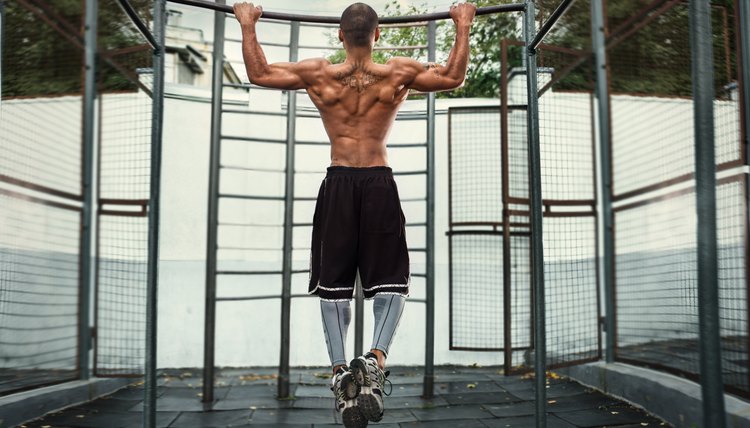What does fact checked mean?
At SportsRec, we strive to deliver objective content that is accurate and up-to-date. Our team periodically reviews articles in order to ensure content quality. The sources cited below consist of evidence from peer-reviewed journals, prominent medical organizations, academic associations, and government data.
The information contained on this site is for informational purposes only, and should not be used as a substitute for the advice of a professional health care provider. Please check with the appropriate physician regarding health questions and concerns. Although we strive to deliver accurate and up-to-date information, no guarantee to that effect is made.
Pullups vs. Deadlifts

Though pullups and deadlifts are very different, both are highly effective exercises that work critical groups of muscles in your body. These exercises are staples of many workouts and, because each exercise works more than one muscle, can promote efficiency in your workout. If you structure your workouts carefully, you can use both deadlifts and pullups as you build total-body strength.
Pullups
Most people are introduced to pullups in elementary school gym class. There's a reason why the pullup is used so frequently when you're young -- it builds upper-body muscle and is a measure of your overall fitness and strength.
Pullups are performed using a pullup bar. When you grasp the bar, use an overhand grip -- palms facing away from you. Pull yourself up until your chin is level with the bar. After a short pause, slowly lower your body until your arms and shoulders are fully extended. The pullup primarily targets your latissimus dorsi, or lats for short, which is the largest muscle of the back. Several assisting muscles are also worked during a pullup -- the biceps, deltoids, rhomboids, trapezii and several smaller muscles in your back and arms.
Deadlifts
While most people learn pullups early in life, many people don't even know what deadlifts are. Deadlifts are similar to pullups in that you must use a pulling motion, but the similarities end there. Conventional deadlifts are done by bending over a barbell, squatting down and using your legs to lift the weight to waist level. The result is an exercise that works your hamstrings, quads, glutes and your entire core as well. Other types of deadlifts, such as stiff-legged deadlifts and sumo deadlifts, are variations on the conventional method. Because deadlifts place a lot of pressure on the lower back, they can lead to back injuries among inexperienced lifters.
Benefits of Pullups and Deadlifts
Both pullups and deadlifts are extremely effective exercises. Notably, each works groups of muscles that naturally work together in daily life. Deadlifts can give you the strength to pick up heavy items, and pullups can help you carry and manipulate those items.
Deadlifts and Pullups Together
Using the common way to split up the body parts while exercising over the course of a week, you could do pullups one day and deadlifts another day. An upper body/lower body split would allow you to perform each exercise twice a week, while full-body sessions would allow you to do both exercises as often as three days a week.
Workout Considerations
Although there is no one "right way" to work out at a gym in regards to working every muscle group each session or splitting upper-body and lower-body exercises between sessions, there is a "right way" to prepare for your workout. Perform a 10-minute warm-up with light aerobic activities such as jumping rope, working on an elliptical machine, taking a slow jog or any combination of these activities. This gets your blood flowing, prepares your muscles and helps avoid injury.
References
Writer Bio
Bryan Berg is a freelance writer based in Long Island, NY. He has been writing since 2002 about personal finance, sports and parenting. He is a contributing writer to eHow Money and LIVESTRONG.COM. He has a Bachelor of Arts in marketing from Hofstra University.
